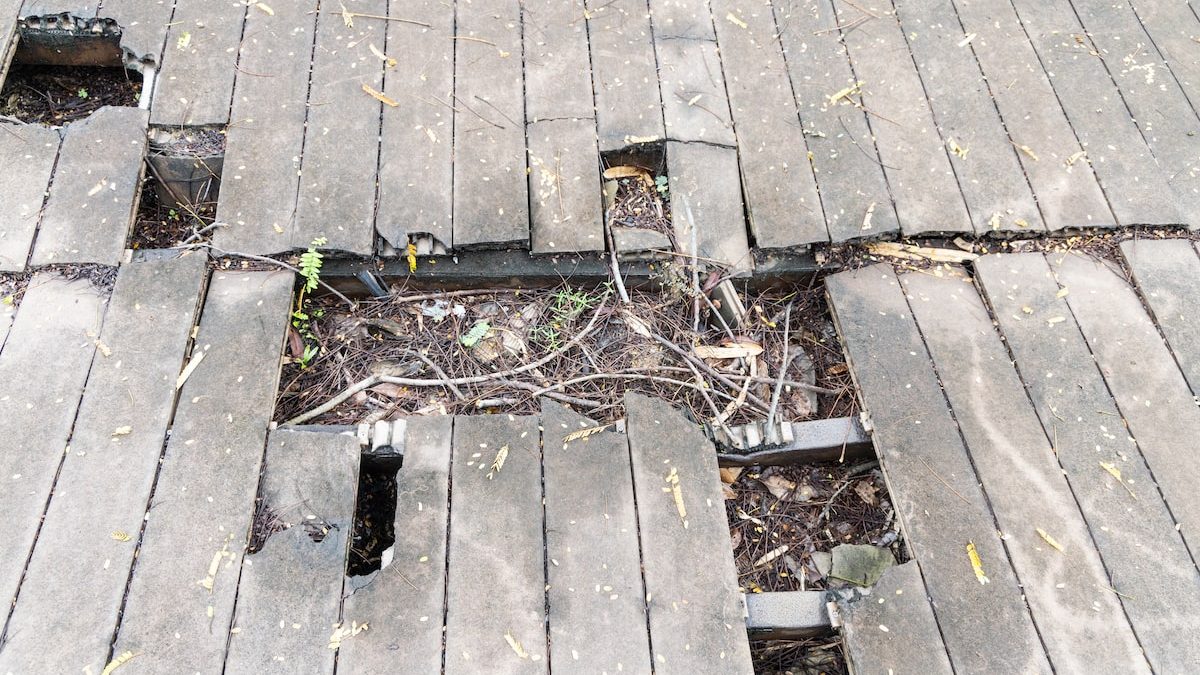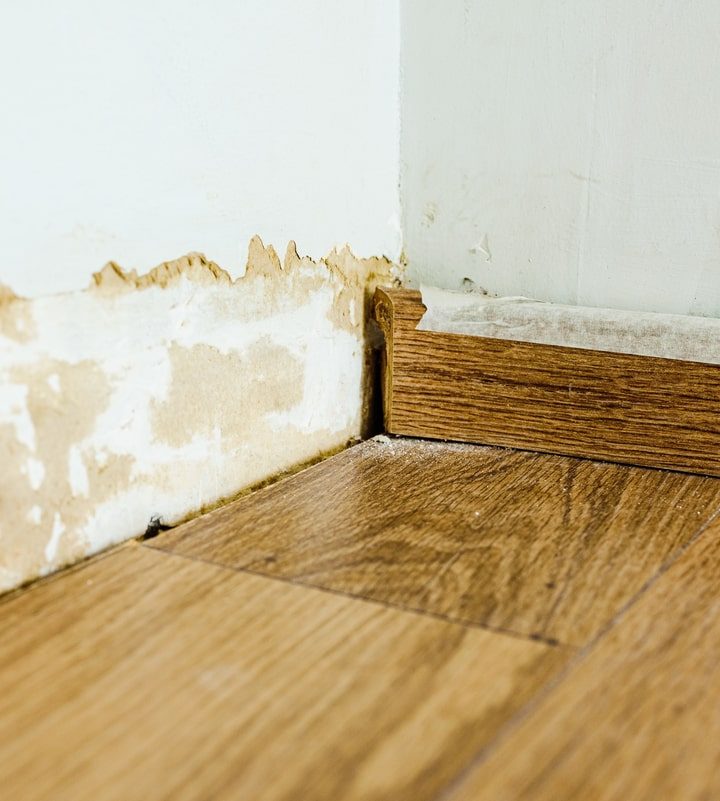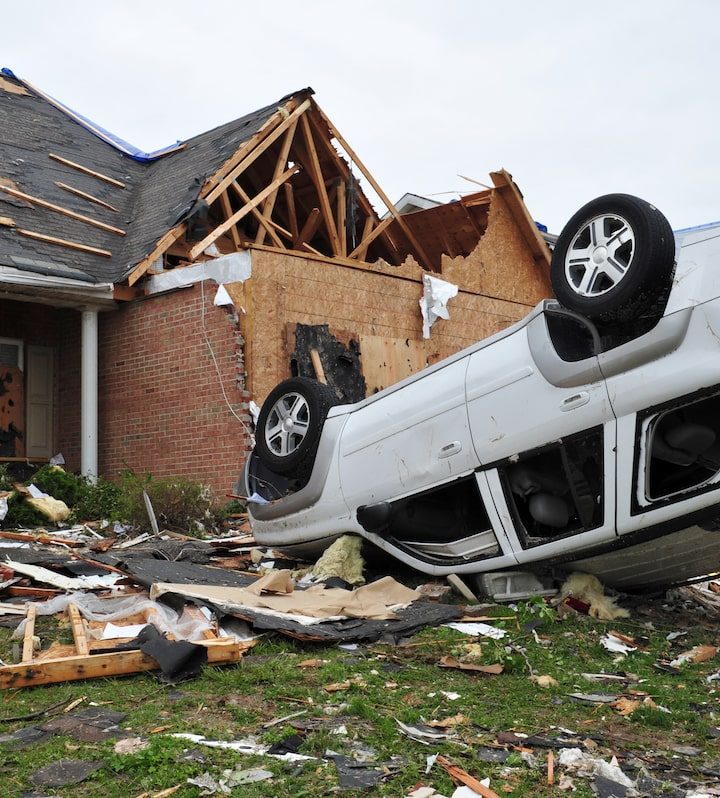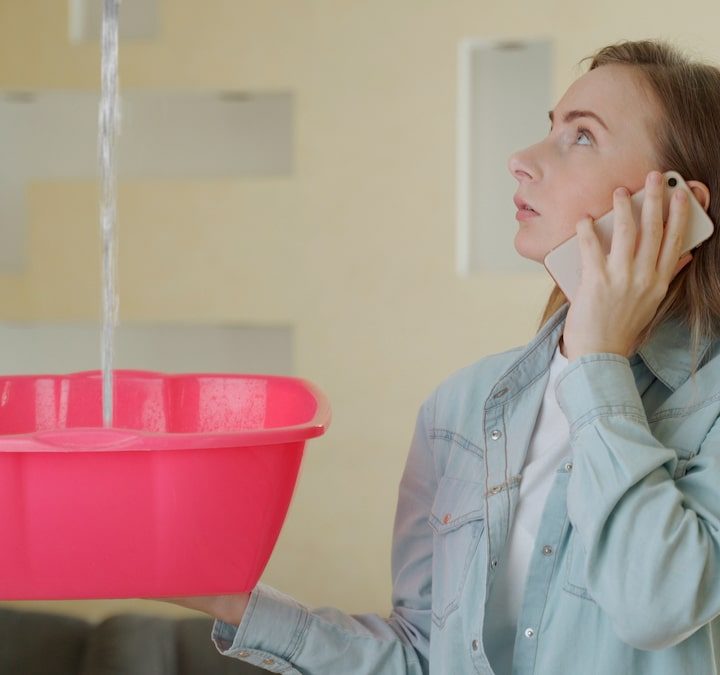Repairing Water Damage On Wood Floors

Mitigating Water Damage on Walls: Prevention and Repair Strategies
March 26, 2023
How To Fix And Prevent Roof Leaks
April 17, 2023Water damage on wooden floors can be a homeowner’s nightmare, leaving unsightly stains, warping, and even potentially compromising the integrity of the entire floor. However, with the right approach and knowledge, repairing water-damaged hardwood floors can be a manageable task that restores the floor’s beauty and durability. With Link Public Adjusters, you can claim insurance to repair water damage to your wood floor, so you can get your new flooring in no time.
Look Out For Signs Of Water Damage On Wood Floors
Determining the major signs of water damage is crucial to prevent water-damaged wood and address the underlying issue that caused the damage to the wood in the first place. Here are some steps you can take to determine the cause of water damage:
- Check For Leaks: Burst pipe or leaky pipe, appliance, or roof leaks could cause damage to floors. Check for any visible signs of leaks, such as water stains, wet spots, or drips. Also, look for any signs of water damage in nearby walls, ceilings, or floors.
- Inspect The Surrounding Area: Look for any areas where water has infiltrated your property, such as windows, doors, or vents. Check the drainage systems and gutters to ensure that they are clear of debris and functioning correctly.
- Consider Weather Conditions: If the water damage occurred during a rainstorm or flood, it might be due to natural causes. In this case, it’s important to take steps to prevent future water damage on your floors, such as installing flood barriers or improving drainage systems.
- Check For Plumbing Issues: Water damage can also occur due to plumbing issues such as clogged pipes, sewer backups, or faulty water heaters. If you suspect that plumbing issues are the cause of the water damage, it’s best to contact a licensed plumber to inspect and repair or replace the wood.
- Look For Human Error: In some cases, water damage may be caused by human error, such as leaving a faucet running, overfilling a bathtub, or leaving a window open during a rainstorm.
Drying The Damaged Wood Area
After assessing the extent of water damage on wood floors, the next step in damage repair is to dry the affected area. Drying a wood floor is critical as it helps to prevent further damage, such as warping, cracking, or mold growth. Here are some key steps involved in drying the affected area:
- Removing Excess Water: The first step is to remove water and dry the floor steadily and remove as much excess water as possible. Use a water vacuum or a mop to soak up the water on the floor. Be careful not to use too much pressure while floor cleaning, as this, may cause more damage to the wood.
- Using Dehumidifiers And Fans: Once the excess water has been removed, use a combination of dehumidifiers and fans to dry the area. Place the dehumidifiers in the affected area to remove excess moisture from the air. Use fans to circulate the air and speed up the drying process. Ensure that the windows and doors in the room are open to increase ventilation.
- Monitoring The Drying Process: It is essential to monitor the drying process regularly to ensure that the wood is drying uniformly. Check the moisture levels using a moisture meter to ensure that the wood is not too dry or too damp. If the wood is too dry, it can crack or split, and if it is too damp, it can lead to mold growth.
- Using Specialized Equipment: In some cases, specialized equipment such as a heat mat or a drying mat may be necessary to dry the wood. These mats can be placed over the affected area to speed up the drying process.
Sanding And Refinishing The Hardwood Floor
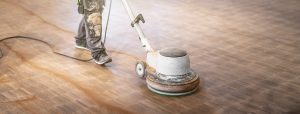
Sanding and refinishing the floor is an essential step in the wood floor water damage restoration. This step involves sanding down the affected area to remove any stains, warping or other damage, and the floors need to be refinished. Here are some key steps involved in sanding and refinishing the floor:
- Sanding The Affected Area: The first step is to scrub the wood to remove any stains, warping or other damage. The sanding process involves using a drum sander or a belt sander to remove the top layer of wood from the affected area. Be careful not to sand too much, as this can cause further damage to the wood.
- Preparing The Surface: Once the sanding process is complete, use a shop vacuum to remove any dust or debris from the affected area. Clean the area with a damp cloth to ensure that it is free from any dirt or debris.
- Applying A New Finish: After sanding the affected area, it is essential to apply a new finish to protect the wood and give it a uniform appearance. Use a wood stain that matches the color of the existing floor to ensure that the sanded area blends seamlessly with the rest of the floor. Apply the wood stain using a paintbrush or a roller, following the manufacturer’s instructions. Allow the wood stain to dry completely before applying a coat of polyurethane finish to the sanded area.
- Blending The Refinished Area With The Rest Of The Floor: Once the new finish has dried, use fine-grit sandpaper to smooth the refinished area and blend it with the rest of the floor. Be careful not to sand too much, as this can cause the refinished area to stand out from the rest of the floor.
Replacing Damaged Floorboard
In some cases, the water damage on wood floors may be severe enough to replace the damaged boards. This step involves removing and replacing boards that are too severely damaged, matching the new boards with the existing floor, and refinishing the replaced boards to match the rest of the floor. Here are some key steps involved in replacing damaged boards:
- Identifying The Damaged Boards: The first step is to identify the boards that are too severely damaged and need to be replaced. Look for boards that are warped, cracked, or show signs of mold growth.
- Removing The Damaged Boards: Once you have identified the damaged boards, use a circular saw or a handsaw to cut the boards along the seams, ensuring that you do not damage the surrounding boards. Use a chisel and a hammer to remove the damaged boards from the floor.
- Matching The New Boards With The Existing Floor: It is essential to ensure that the new boards match the existing floor in terms of color, texture, and grain. Use a sample board to match the color and texture of the new boards with the existing floor.
- Flooring Installation: Once you have matched the new boards with the existing floor, use a nail gun or screws to install the new boards. Ensure that the new boards are level and flush with the surrounding boards.
- Refinishing The Replaced Boards: After installing the new boards, sand the entire floor, including the replaced boards, to create a uniform surface. Apply a wood stain that matches the color of the existing floor to the replaced boards, and then apply a coat of polyurethane finish to the entire floor.
Prevent Damage On Wooden Floors
Preventive measures can help to reduce the risk of water damage to wooden floors and other areas of your home. Here are some steps you can take to prevent water damage:
- Regular Maintenance: Regularly inspect your home for signs of water damage, such as leaks, cracks, or mold. Address any issues as soon as possible to prevent them from getting worse.
- Proper Ventilation: Proper ventilation can help to prevent moisture buildup in your home, which can lead to water damage. Use exhaust fans in bathrooms and kitchens, and open windows and doors to promote air circulation.
- Avoid Water Accumulation: Avoid leaving standing water on floors or in sinks and tubs. Clean up spills and leaks immediately to prevent water damage.
- Install Water Alarms: Water alarms can alert you to the presence of water in areas of your home where it shouldn’t be, such as basements or crawl spaces. This can help you to address any issues before they become more serious.
- Maintain Your Plumbing: Regularly maintain your plumbing to prevent leaks or other issues. This can include checking for and fixing leaks, insulating pipes to prevent freezing, and replacing old or damaged plumbing fixtures.
- Use Water-Resistant Materials: When building or renovating, consider using water-resistant materials in areas that are prone to water damage, such as bathrooms and kitchens. This can include using waterproof flooring, sealing surfaces with water-resistant sealants, and installing moisture barriers.
Taking these preventive measures can help to reduce the risk of water damage to your home and protect your wooden floors and other surfaces. If you do experience water damage or any other damage, it’s important to address it as soon as possible to prevent further damage and the need for more extensive repairs. You also need a public adjuster to file your claims and help you get the insurance you need. Contact us today if you need a public adjuster!

